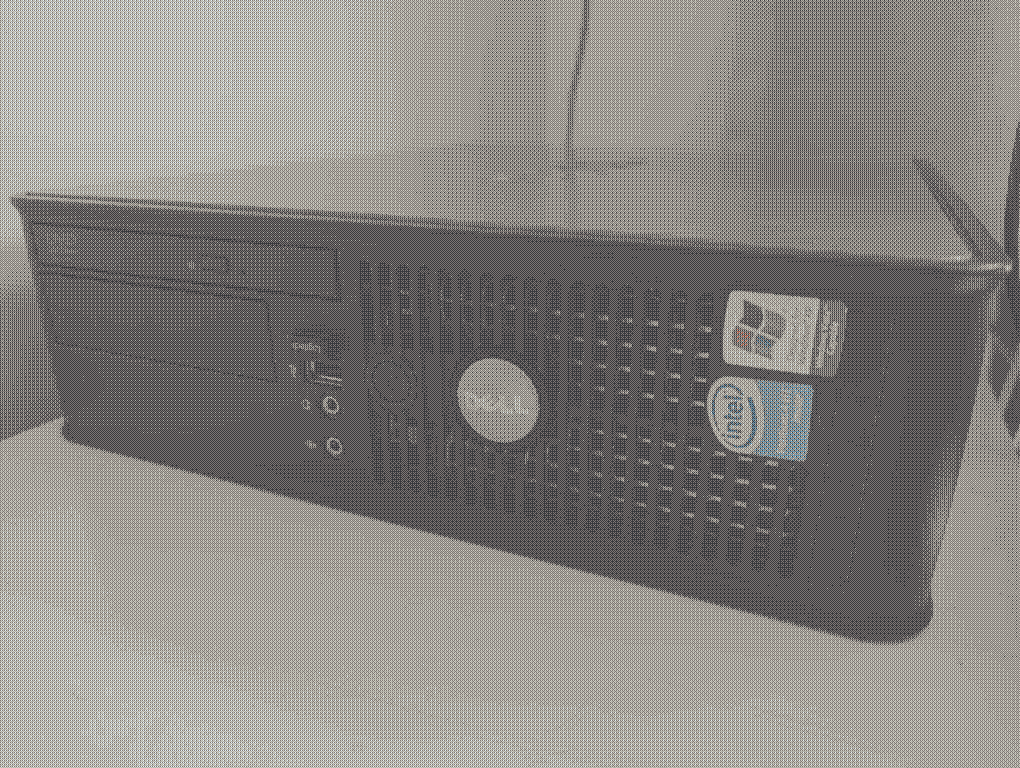I was recently handed Dell Optiplex GX620 by a family member in exchange for some minor data recovery under the assumption I would then dispose of it (yeh right). I acquired this machine for the family member a decade or so ago as a e-waste save from my workplace, but that is about the extent of my history with it so I decided to explore the machine a bit more.
Launched around 2006, it is soon to cross that arbitrary 20-year boundary that makes it a retro-computing device, although the case design shares a lot of the design language used in my much newer Dell Optiplex 3070. Internally it is very different, in fact it is mirrored, with the optical drive and expansion ports on the opposite side of the case.

I started at this same workplace only 2 years earlier in 2004 and on my allocated desk was a Dell Optiplex GX260, which used the older, chunkier, case design, so I think this is the point where this new design entered service.
It uses a 3GHz Pentium 4 531 which is notable for being a very early Intel processor to support the amd64 instruction set. These were not well regarded in their time for their poor performance and hot running temperature. Besides being 64bit it lacked many modern CPU features like speed-stepping (which would help the heat problem) and hardware virtualisation, but it does support hyper-threading, <fast show>which was nice.</fast show>
This unit came with 768MB of DDR2 PC2-5300 memory as 3x 256MB modules. A 250GB Maxtor Diamondmax 10 HDD and a slimline DVD reader.
It was surprising seeing a Maxtor again, this one was manufactured on 6th July 2006 only a week after the Maxtor acquisition by Seagate so is likely one of the last Maxtor branded drives in existence. Installed on it was a very end-of-support version of Linux Mint and Windows XP pro in dual-boot.
Windows XP caught my attention being that is has been a very long time since I last used it. I renovated the install by removing old cruft like printer drivers, replaced the AV with a modern version of AVG which apparently still works on XP. I installed legacy update to get the patches up-to-date and following this long process the Maxtor hard drive got very hot, like painful to touch hot.
With the XP maintenance complete, the system actually runs pretty well, but I wanted to see what it could do if I stripped out all the bottlenecks I could find.
First was to upgrade the memory. There are 4x DDR2 slots on the motherboard. 2GB DDR modules exist and I actually have some to hand from another machine, so I tried dropping them in but it would only detect 4GB in the OS. This I learned is a chipset limitation, even though the BIOS detects 8GB, the OS can be 64bit and still it will only have 4GB usable. 4GB in 2006 would have been a dream though.
Next I swapped out the hard drive with a 120GB Kingston SSD I have spare, which was a challenge to fit due to the plastic tray cable cut-outs being in the wrong position but some SATA cable contortion it went in.
I performed a fresh install of Windows XP on this drive and now it absolutely screams, almost literally. You don't see the start up logo, it gets from BIOS to desktop in a couple of seconds so skips it entirely. The shipped version of IE is useless on the modern web due to its outdated SSL support, fortunately I could grab the last Firefox supported on XP, version 52 from ftp.mozilla.org which kindly hasn't moved to HTTPS (perhaps for us vintage computing enthusiasts?).
Firefox 52 is still very functional and fast enough on this PC, in fact everything else now runs at full tilt. If there is any slow down, it is because the CPU is pinned to 100% trying to keep up, and it does this often which seems to be generating more heat as a result, and yes, I did replace the baked-on CPU gunk.
This PC came from a day when waiting for the computer was expected, everything was in balance, the disks were slow, the OS was bloated, the network was a trickle (although this unit had unusually fast Internet in its day being used at an ISP). What I've just done is eliminate every restraint and fed it 500mbit of Internet and the last remaining bottleneck is that poor CPU, it doesn't like it.
Around the time these were the standard-issue office PC, our office IT dept (infernal systems) implemented a Wake-on-LAN system you could arrange to boot your computer before arriving at work so it was ready to go when you arrived. It seems laughable now but it was normal that it took at least 30 minutes for these machines to get fully sync'd and ready to go, every day. If only they had 4GB of RAM and an SSD, it would have been a very different story, but would it have been better or would we too be expected to run at full tilt every minute of the day?